What's New
Displaying results 211 - 220 of 4913

Resource | Reviews and Snapshots,
Tuberculosis profiles are generated automatically based on data reported by countries and which are held in WHO's global TB database. The document includes data for estimates of TB burden, UHC and social protection, TB/HIV care in new and relapse TB patients, drug-resistant TB care in the country.

Resource | Reviews and Snapshots,
Tuberculosis profiles are generated automatically based on data reported by countries and which are held in WHO's global TB database. The document includes data for estimates of TB burden, UHC and social protection, TB/HIV care in new and relapse TB patients, drug-resistant TB care in the country.

Resource | Reviews and Snapshots,
Tuberculosis profiles are generated automatically based on data reported by countries and which are held in WHO's global TB database. The document includes data for estimates of TB burden, UHC and social protection, TB/HIV care in new and relapse TB patients, drug-resistant TB care in the country.

Resource | Reviews and Snapshots,
Tuberculosis profiles are generated automatically based on data reported by countries and which are held in WHO's global TB database. The document includes data for estimates of TB burden, UHC and social protection, TB/HIV care in new and relapse TB patients, drug-resistant TB care in the country.
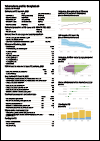
Resource | Reviews and Snapshots,
Tuberculosis profiles are generated automatically based on data reported by countries and which are held in WHO's global TB database. The document includes data for estimates of TB burden, UHC and social protection, TB/HIV care in new and relapse TB patients, drug-resistant TB care in the country.
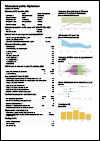
Resource | Reviews and Snapshots,
Tuberculosis profiles are generated automatically based on data reported by countries and which are held in WHO's global TB database. The document includes data for estimates of TB burden, UHC and social protection, TB/HIV care in new and relapse TB patients, drug-resistant TB care in the country.
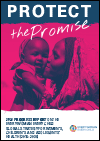
Resource | Publications,
The 2022 Global Strategy progress report provides an assessment of the situation of women’s, children’s and adolescent’s health in this third year of the COVID-19 pandemic. The report presents abundant evidence showing that inequities persist despite great progress in reducing maternal and child mortality in the two decades leading up to the pandemic.
It also showcases key drivers of women’s, children’s and adolescents’ health and well-being. It emphasizes that women’s empowerment and adolescent participation are pivotal to achieving the 2030 Agenda yet notes that there is a long way to go in reducing gender inequality and increasing young people’s meaningful opportunities to actively engage in community and civic life.
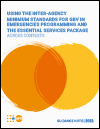
Resource | Publications,
UNFPA implements programmes addressing gender-based violence (GBV) in 153 countries and territories, many of which face humanitarian emergencies. Leading resources used by GBV practitioners include the Inter-Agency Minimum Standards for Gender-Based Violence in Emergencies Programming (the GBViE Minimum Standards) released in 2019 and the Essential Services Package for Women and Girls Subject to Violence released in 2015.
Experiences across UNFPA have shown that GBV practitioners have faced challenges in determining when and how to use these tools and how to adapt different approaches to diverse contexts. This brief guidance note defines the distinct objectives of and links between these two resources. It supports GBV practitioners in navigating the use of both across a range of contexts.

Resource | Publications,
The Manual on Social Norms and Change is a revision of the initial version developed and published by UNFPA and UNICEF in 2016. It aims to contribute to create conceptual clarity and present programmatic interventions needed to address and facilitate a social norms change with focus on the elimination of female genital mutilation.
The manual provides practical examples and theoretical concepts for understanding processes related to attitudinal and collective behavioural change and contains the following five key modules to be covered in a five-day workshop: Dynamic of Social Norms: Female Genital Mutilation, From Gender Inequality to Shared Positive Social Norms, Effective Legislative Reforms in Situations Calling for Social Change, Seven Common Patterns and Transformative Elements for Change and Putting It All Together.
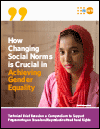
Resource | Publications,
This Technical Brief summarizes the previous Compendium on social norm change to achieve gender equality, which provides a framework for programmatic approaches to norm change at scale. The Technical Brief and Compendium present promising strategies, tested approaches and practical examples of social norm change. This includes a programme design framework that is relevant for different aspects of sexual and reproductive health and rights in various contexts. The publications build on previous work by UN agencies, civil society, academia and others.





